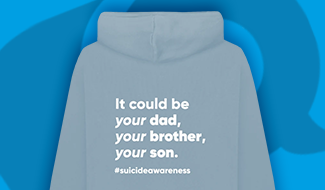For years victims of domestic abuse have suffered in silence and have had limitedknowledge of the protection that can be afforded to them by the courts (and other authorities).
What is a Non-molestation Order?
In essence, a Non-molestation Order is exactly what the term describes. It is a civil order obtained by a victim of domestic abuse from a Judge (or Magistrates) through the Family Court. The term molestation has a wide interpretation – it can include, but is not limited to, physical, emotional, financial and sexual abuse, and it can also cover coercive and controlling behaviour, intimidating behaviour and harassment. The abuse can be once or over a sustained period of time.
Do remember you are worth so much more than having to put up with an abusive relationship and you can move on from it. Don’t stay quiet.
A victim of such abuse can apply to the court for a Non- molestation Order against someone described as an ‘associated person’. Such a person(s) can include spouses, ex-spouses, civil partners, ex-civil partners, cohabitees and former cohabitees; it can also include various family members.
The person applying for an order is referred to as the ‘applicant’ and the person against whom orders are sought is known as the ‘respondent’.
By obtaining a Non-molestation Order the court proclaims that the abuser (a perpetrator of the abuse against a victim) cannot do or take certain actions, for example, not to approach the victim, not to act in a threatening manner or use violence or abuse towards a victim (in some cases the child(ren)) or attend any property occupied by the victim. The Non-molestation Order would usually specify that the abuser cannot use or threaten violence but may also prohibit other, more general behaviours, which amount to harassment or cause distress to a victim. An example might be unwanted and frequent contact with the victim by numerous means, through social media and text messages and not just telephone calls. In short, the Non-molestation Order, if granted, prohibits the abuser from ‘molesting’ the victim.
A Non-molestation Order is time limited and provides protection to a victim. However, a victim can ask for the order to be extended just prior to its expiry if the victim needs to continue with the protection.
Such an order not only provides protection but also empowers a victim with some sense of control in relation to uncalled for actions from their abuser.
Where an order is made by the court and this is breached by the abuser, either by themselves or by instructing any other person to do so, then the victim in such circumstances can contact the Police who can arrest the perpetrator(s) and take them through the criminal justice process. If found guilty of a breach of the terms of a Non- molestation Order the abuser can face charges for a criminal offence and can be dealt with by a fine or up to 5 years imprisonment, although an initial and/or minor breach may not attract a custodial sentence. Any persistent or serious breaches may well do.
The victim also has the option of referring the matter back to the Family Court as well and follow the civil process.
In addition to seeking a Non- molestation Order a victim may also seek to remain in the family home to the exclusion of the abuser. In such circumstances, the option available would be to seek an Occupation Order to maintain some stability for the victim and any child(ren). Such an order is available to an ‘associated person’ (see above). The court has the power to remove the abuser, for example your spouse or partner, from the family home. There are also additional powers available to a Judge making an Occupation Order, such as requiring one party to be responsible for maintenance of the home and paying the rent or mortgage and other outgoings such as rates and utility bills affecting the home.
Occupation Orders can in some circumstances be complicated as they affect one party’s right to live in the family home and are sometimes considered to be ‘draconian’ orders. To consider the options of seeking such an order it is important to get the right advice at an early stage for your circumstances.
A court may or may not attach a power of arrest to an occupation order depending on the circumstances. Therefore, an important factor to consider is ‘safety’ and ‘stability’, not just for the victim but also for a child(ren).
When would I seek a Non-molestation Order?
In simple terms, you should apply to the court if your abuser falls into the category of an ‘associated person’ and you area victim of domestic abuse, as described above.
A victim does not deserve the abuser’s conduct or behaviour tantamount to undermining the victim, nor do they deserve to suffer a physical assault or be afraid for their own safety.
It is important that a victim acts expeditiously if there is any risk that the victim (or any child(ren)) will suffer harm through the conduct and behaviour of their abuser.
Research has shown that domestic abuse witnessed by children and young people can cause serious harm to them and is tantamount to child abuse.
Therefore, do not hesitate. The sooner the victim applies for a Non-molestation Order the better, as this will afford some safety to the victim (and the child(ren)) and will control the conduct and behaviour of the abuser as the court will place restriction(s) on the abuser.
Top tips – some do’s and don’ts
- Do ensure you understand the terms of the Non-molestation Order, that it adequately safeguards you (and any child(ren)) and provides the necessary protection youseek.
- Do keep a copy of the Non-molestation Order handy in case you should need to refer to it when you are out and about or in case it is breached.
- Do make sure you provide as much detail of the abuse in your application to the court.
- Do make sure your evidence of abuse is in a clear and concise format in your application to the court. Don’t be afraid to ask for assistance. Use examples, such as text messages.
- Do use appropriate options to maintain an avenue of communication where there are contact arrangements for children, such as a contact diary.
- Do keep a diary or a notebook with emergency contact details for the Police, Social Services, support agenciesand other important contacts. It can also be used to keep a written record.
- Do remember you are worth so much more than having to put up with an abusive relationship and you can move on from it. Don’t stay quiet.
- Don’t continue with being a victim of abuse for yourself and any child(ren)) because you are afraid of what to expect if you move on.
- Don’t blame yourself (or the child(ren)). Remember it is not your fault. The abuser is the one at fault.
- Don’t dismiss the severity of the abuse or its long-term affect on you (and any child(ren)).
- Don’t make an application to gain an advantage on the other party, for example, in contact arrangements or financial & property matters. It should be made to seek protective measures.
- Importantly, don’t be afraid to seek help. There are various support agencies and lawyers who specialise in this area of work.
- Finally, do remain positive for you and any child(ren). There is life outside of an abusive relationship.
It is the view of the author that the above article provides some insight into this particular areaof the law. It is simply an overview and the author would recommend the reader to seek advice and assistance from a specialist family lawyer who would be better placed to provide advises specific to your own circumstances. However, it is hoped that it provides some valuable information.
Posted on June 7, 2019
















